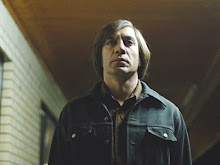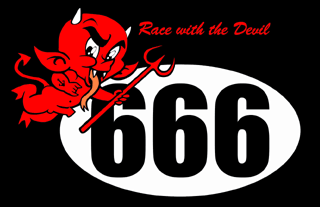
Industrial music
From Wikipedia, the free encyclopedia
Jump to: navigation, search
This article needs additional references or sources for verification.
Please help to improve this article by adding reliable references.
Unverifiable material may be challenged and removed.
This article has been tagged since July 2007.
Industrial
Stylistic origins: Musique concrete, Fluxus movement , Performance art, Electronic Music, Krautrock, Noise music
Cultural origins: Early 1970s; United Kingdom, Germany, Canada, United States
Typical instruments: Synthesizer - Drum machine - Tape loops - Drums - Guitar - Found objects - Modified electronics (in latter incarnations were added Sequencer - Keyboard - Sampler)
Mainstream popularity: Underground since its creation, a moderate peak during the mid-1990s
Derivative forms: EBM - Aggrotech - Industrial Metal - Industrial Rock - Ambient Industrial - Coldwave - Techno - IDM - Trance - Synth pop - Futurepop - Glitch
Subgenres
Other topics
Notable artists - List of noise musicians - List of post-industrial music genres and related fusion genres
Industrial music is a loose term for a number of different styles of experimental music, especially but not necessarily electronic music. The term was first used in the mid-1970s to describe the then-unique sound of Industrial Records artists. Since then, an extremely wide variety of labels and artists have since come to be called "Industrial."
The first industrial artists experimented with varying degrees of noise, production techniques and what, at the time, were considered controversial topics. Their production was not only limited to musical output. It also included mail art, performance art, installation pieces and other art forms.[1]
Originally, the term solely referred to music created by Industrial Records and related artists. As time progressed, the term began to refer to artists either directly influenced by the original movement, artists using an "industrial" aesthetic such as imagery devised around mechanical objects and industry itself and, more distantly, artists who were sometimes only minimally influenced or insipred by the Industrial Records roster and other related artists. The evolution of industrial music has led to an overwhelming number of sub-genres and lines of influence.
Contents
[hide]
* 1 Terminology
* 2 History
o 2.1 Early influences
o 2.2 Industrial Records
o 2.3 Post-industrial developments
* 3 Post-industrial genres
* 4 References
* 5 See also
* 6 External links
[edit] Terminology
Industrial was a term meant by its creators to evoke the idea of music created for a new generation of people, previous music being more "agricultural." Specifically, it might have referred to the streamlined process by which the music was being made, although many people now interpret the word as a poetic reference to an "industrial" aesthetic, recalling factories and inhuman machinery.
On this topic, Peter Christopherson of Industrial Records once remarked, "The original idea of Industrial Records was to reject what the growing industry was telling you at the time what music was supposed to be."[citation needed]Martin Atkins of Pigface described Industrial in a 1997 interview with Industrial Nation Magazine as "What punk rock was in 1976." He continued "If you listen to early Psychic TV or late Throbbing Gristle or early Throbbing Gristle, It's experimentation in what sounds could do."
[edit] History
[edit] Early influences
Luigi Russolo's 1913 work The Art of Noises is often cited as the first example of the industrial philosophy in modern music. After Russolo's musica futurista came Pierre Schaeffer and musique concrète, and this gave rise to early industrial music, which was made by manipulating cut sections of recording tape, and adding very early sound output from analog electronics devices.
Also important in the development of the genre was the Dada art movement, and later the Fluxus and Surrealist art movements, as well as the 'found object' asthetic of the Arts and Crafts movement.
Edgard Varèse was also a major pioneer in electronic music. His composition Poème électronique, for example, debuted at the 1958 Brussels World's Fair in the Philips Pavilion.
[edit] Industrial Records
20 Jazz Funk Greats by Throbbing Gristle featured contrasting imagery. The back cover features what appears to be the same image in black and white. A closer look reveals a nude male corpse now lying in the grass in front of the band.
20 Jazz Funk Greats by Throbbing Gristle featured contrasting imagery. The back cover features what appears to be the same image in black and white. A closer look reveals a nude male corpse now lying in the grass in front of the band.
Industrial Music for Industrial People was originally coined by Monte Cazazza[2] as the strapline for the record label Industrial Records (founded by British art-provocateurs Throbbing Gristle, the musical offshoot of performance art group COUM Transmissions).
The first wave of this music appeared in 1977 with Throbbing Gristle and NON. These releases often featured tape editing, stark percussion and loops distorted to the point where they had degraded to harsh noise. Vocals were sporadic, and were as likely to be bubblegum pop as they were to be abrasive polemics.
Re/Search #6/7: Industrial Culture Handbook collected numerous interviews from various artists involved in circle surrounding Industrial Records.
Re/Search #6/7: Industrial Culture Handbook collected numerous interviews from various artists involved in circle surrounding Industrial Records.
Early industrial performances often involved taboo-breaking, provocative elements, such as mutilation, sado-masochistic elements and totalitarian imagery or symbolism, as well as forms of audience abuse.
Swedish rock act The Leather Nun, were signed to Industrial Records in 1978, being the first non-TG/Cazazza act to have an IR-release. Their only IR-release, Slow Death EP (IR 007, nov '79), rapidly climbed the alternative charts in the UK and was on power play on the influential John Peel BBC1 radioshow for two weeks in December '79.[citation needed]
Bands like Test Dept, Cabaret Voltaire, Clock DVA, Factrix, Autopsia, Nocturnal Emissions, Esplendor Geometrico, Whitehouse, Severed Heads and SPK soon followed. Blending electronic synthesisers, guitars and early samplers, these bands created an aggressive and abrasive music fusing elements of rock with experimental electronic music. Artists often used shock-tactics including explicit lyrical content, graphic art and Fascistic imagery; at the forefront of this were Croc Shop and Laibach. Industrial Records experienced a fair amount of controversy after it was revealed that it had been using an image of an Auschwitz crematorium as its logo for a number of years.
Across the Atlantic, similar experiments were taking place. In San Francisco, shock/performance artist Monte Cazazza (often collaborating with Factrix and Survival Research Labs/SRL) began working with harsh atonal noise. Boyd Rice (aka NON) released several more albums of noise music, with guitar drones and tape loops creating a cacophony of repetitive sounds. In New Zealand, experimental / art rock groups sprouted from the underground such as The Skeptics, Hieronymus Bosch (NZ), Fetus Productions, Ministry of Compulsory Joy and The Kiwi Animal.
In the rest of Europe, particularly in Italy, work by Maurizio Bianchi/M.B./Sacher-Pelz at the end of 1979/beginning of 1980, with some electronic/radiographic extreme works edited in a very limited edition ("Cainus", "Venus", "Cease To Exist", "Velours", "Mectpyo Blut" cassette-tapes, and "Symphony For A Genocide", "Menses", "Neuro Habitat" LPs).
In France, early artists influenced by Industrial Records included Vivenza, Art&Technique, Pacific 231, Étant Donnés, Le Syndicat and Die Form.
In Germany, Einstürzende Neubauten were performing daring acts, mixing metal percussion, guitars and unconventional "instruments" (such as jackhammers and bones) in elaborate stage performances that often damaged the venues they were playing in.
[edit] Post-industrial developments
Throughout the early to mid 1980s, the post-industrial movement began to emerge around the world. Taking influence from the harsh experimentation of the original foundation-laying artists, these bands began to forge the recognizable musical frames in which industrial music exists today. Skinny Puppy from Vancouver Canada (debuting with Back and Forth in 1984), KMFDM, from Germany (debuting with Opium in 1984), Front 242, the pioneers of EBM from Belgium (debuting with Geography in 1982) and Foetus from Australia (debuting with Deaf in 1981) are some of the most notable second-wave artists who helped popularize and redefine the genre amongst the underground music culture (and laying the foundations for most future sub-divisions of the genre). Although notable artists Ministry were active at the time (releasing their debut With Sympathy in 1983), their evolution to legitimate industrial music did not take place until their second release, Twitch in 1986 - at which point they became one of the most influential artists to the later emerging coldwave scene, and even later to industrial metal.
In the early 1980s the Chicago-based record label Wax Trax! helped to forge the industrial music genre. At the forefront of this explosion of musical exploration were bands such as Chicago's Ministry, Acumen Nation, My Life With The Thrill Kill Kult and Die Warzau. Wax Trax was one of the first labels to carry this new strain of punk-influenced Industrial music. It was one of the most widely respected labels of the genre.
By the late 80s, the scene had grown considerably as the music became a staple of the club scene - artists were emerging from all over the world and record sales of key artists were increasing rapidly. One of the most important albums in the genre's development was Nine Inch Nails' comparatively commercially-structured "Pretty Hate Machine," released in 1989. NIN performances began breaking the style into mainstream rock and punk culture at that point. Ultimately the band's accomplishments, alongside the likes of Ministry, led to the further development of not only the style as a whole, but of a number of industrial/rock and to an even greater degree, industrial/metal fusion sub-genres to later emerge.
The genre enjoyed relatively popular mainstream attention throughout the mid 1990's. Thanks to the charting success of albums such as Ministry's "Psalm 69: The Way to Succeed and the Way to Suck Eggs" and Nine Inch Nails' Broken, eventually leading to the multi-million selling releases of Nine Inch Nails' "The Downward Spiral" and to some degree even Marilyn Manson's "Antichrist Superstar". Soon thousands of new distantly industrial influenced musicians came onto the scene. They came to be popularly called simply industrial, though they may have shared all but nothing in style or execution with the original string. Subsequently, numerous new industrial labels appeared to accommodate the blossoming market, such as Pendragon, 21st Circuitry and Energy Records. However, like many of the artists (often solo-musician projects who aimed to emulate Nine Inch Nails' commercial success), these labels were short lived and by 2000 most had ceased to exist, with the exception of Metropolis Records.
Once again, most likely attributed to the influence of Nine Inch Nails, a number of bands took industrial's abrasive electronics and simply incorporated them into a mainstream metal or hard-rock format,including artists such as Filter, Stabbing Westward, Econoline Crush, Fear Factory and Gravity Kills.
[edit] Post-industrial genres
Main articles: Post-industrial (music) and List of post-industrial music genres and related fusion genres
Over the years, the term 'post-industrial' has come to refer to music having the industrial aesthetic such as noise/power electronics, neofolk, death industrial, martial industrial, dark ambient, and occasionally old school EBM. [3] [4]
[edit] References



No comments:
Post a Comment